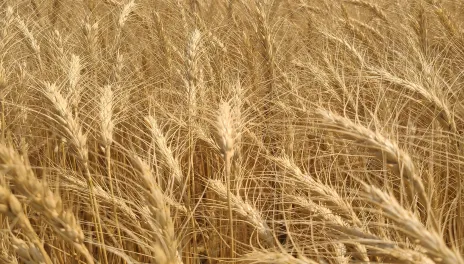Introduction to Biofortification: What’s in Your Wheat?
Biofortification is an emerging global strategy that increases the nutrient content of food crops. Wheat, rice, and corn are common crops that are targeted for biofortification efforts. One of the common goals of biofortification is a food system-wide increase in key micronutrients, especially in countries with widespread malnutrition. The amount of desired nutrient content (biofortification) varies by average consumption of a product within a country, so that the grain nutrient concentration increases average intake of the nutrient. This could be considered similar to providing a vitamin supplement on a large scale. Zinc and iron are the most common nutrients targeted in biofortification, and elevated levels can be achieved either through plant breeding or input management.
In 2020 and 2021 spring wheat trials were established at the CREC under dryland and irrigated conditions to evaluate the effect adding zinc fertilizer at different wheat growth stages, in conjunction with an early season herbicide, scab fungicide, or post-anthesis nitrogen application. A high yielding variety (Faller) was compared to a high protein variety (Bolles). The goal of the study was to determine if/how much zinc concentration increases in grain after the different applications. Results of the study are in this table.

To summarize, zinc concentrations were increased across all environments when applied at flowering or post-anthesis growth stages. Early season applications did not influence final zinc concentrations. The largest increase in zinc concentration occurred with Bolles, a high protein variety, when zinc was applied at the flowering growth stage. The uniform response across environments and years was surprising, as few things can be repeated so consistently in biological systems. While the exact desired zinc concentration can vary depending on markets, a good benchmark is 45 ppm. A concentration greater than 45 ppm would be the goal of a successful strategy. During this study, the natural concentration of zinc was in the upper 30s to low 40s, so there was only a small boost needed. The actual boost at the optimum timing produced concentrations well above the desired threshold.
The next question become marketability. Can this be exported as a specialty class of wheat? As of now, there is no framework established to export this biofortified product. However, this evidence should open some eyes about potential opportunities for another value-added product.
Mike Ostlie, Ph.D.
Mike.Ostlie@ndsu.edu
Director/Agronomist

